Prince of Persia: The Lost Crown Interview with Cinematic Lead Joseph-Antoine Clavet | On Making a Legend
Crafting a new tale.
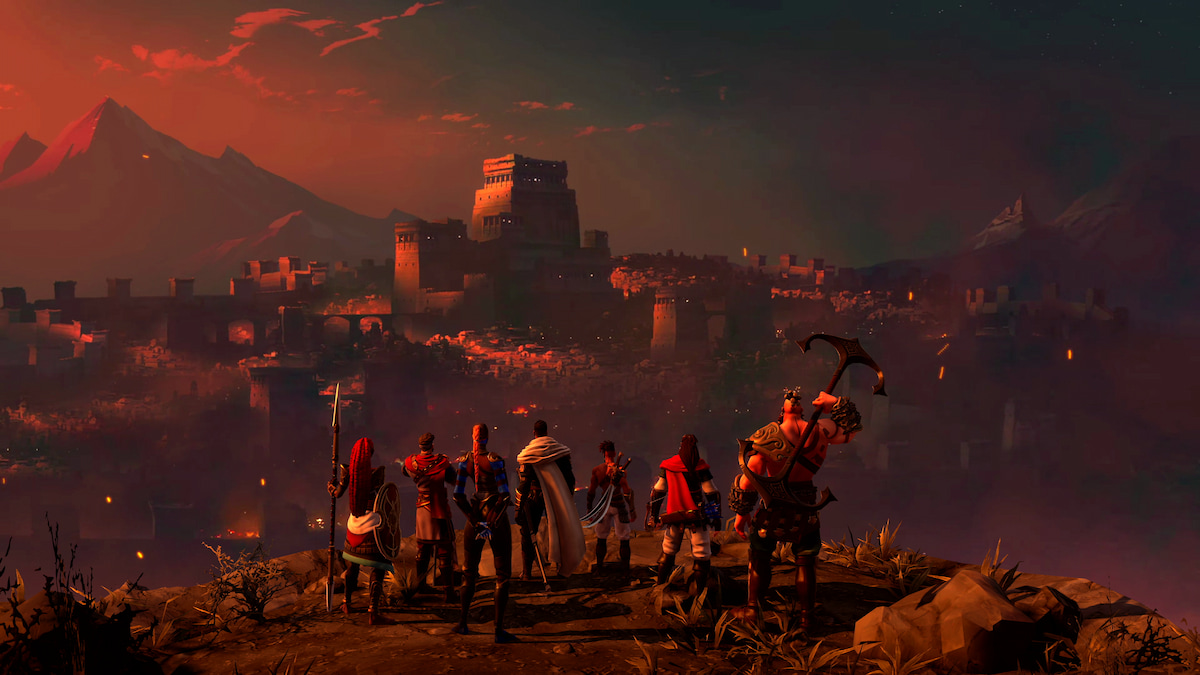
Prince of Persia: The Lost Crown marks a new entry in the iconic series for the first time in over 10 years, and its reveal at Summer Games Fest surprised those not expecting a return to its traditional side-scrolling roots. For a Metroidvania sicko like myself, though, I couldn’t be happier.
At a recent preview event, I sat down with cinematic lead Joseph-Antoine Clavet to discuss Zoroastrianism and its influences on the game, why representation is awesome, and of course, Persian food.
Remembering the Past
Matt Vatankhah, Prima Games: It seems that Persian culture and Zoroastrianism have big influences on the game, and one core theme of Zoroastrianism is the never-ending struggle between good and evil. A sort of struggle that’s as constant as the flow of time itself..
Joseph-Antoine Clavet: “You exactly got it. That’s exactly it.”
MV: ..And I noticed in The Lost Crown, we see the manipulation of time as something that plays a big part in the story, something affecting the flow of time. Would you say that Zoroastrianism plays a theme in the game’s story?
Joseph-Antoine Clavet: “It does. It does because it just, first, it felt right. Why? Because there’s so many Gods that are linked in the thematic that you’re talking about. They’re really part of what created the world, what was protecting Persian empires. So this was always an element that needed to be there, and that actually was fitting so well with the game. Like you mentioned – the notion of time, what is the timeline, how many timelines are there? So this is something that we always kept in terms of the writing, and when I say ‘we’ – narrative team, the writers, Linda, Jacques, so you’re absolutely right in the middle.
I’m not gonna go into too many details, because there would be some spoilers, but if you’re fond of Zoroastrian mythology, I think you’ll have a good run for your money.”
MV: Right from the start of the game, I saw references to Zoroastrianism. As soon as you get into the palace, uh.. shame on me for forgetting the name..
Joseph-Antoine Clavet: “Simurgh?”
MV: Is that it? The big wings..
Joseph-Antoine Clavet: “The wings that reflect Time and Knowledge, yes!”
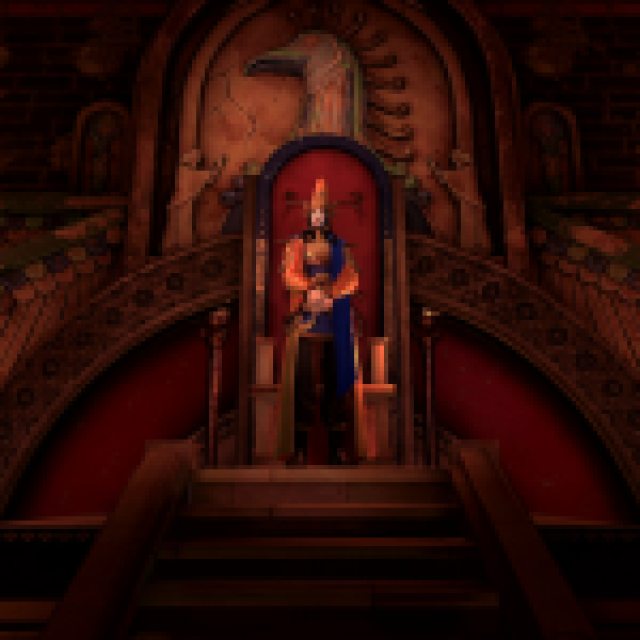
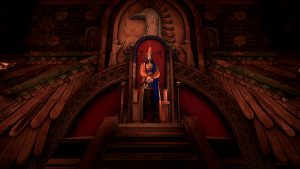
MV: Exactly, you see it hanging over the Queen and I thought, ‘Oh, that’s awesome, right there in your face’…
Joseph-Antoine Clavet: “The type of sculptures existing in the background, the type of statues, some character names. I think it’s really interesting what you’re saying because for us the goal was never to make a historically accurate game, even more when you’re dealing with mythology. What was important was having the right representation of that culture.
So we make sure to read the good material, analyze the material altogether, and also – not me, I was not personally involved with this – but having the right consultant that can tell us if we’re taking the right decision. Always understanding that we didn’t want to make a history book, our goal was to make a Legend. A Myth. From what you find in those type of myths. So, Matt, I’m happy that from the beginning you were able to feel those little fishing lines that we just threw to the player and that just drove the story forward as the journey unfolds.”
“… we didn’t want to make a history book, our goal was to make a Legend. A Myth.”
MV: Right, and it’s clear that everyone did their research on the history and the religion of Zoroastrianism. Like you said, the culture, the names, and even the music in the background has very distinct sounds and instruments you can hear.
Joseph-Antoine Clavet: “Oh absolutely, like, for the music, we – and when I say ‘we’ – the team even made sure to go get the right people for the right tones. So we had two composers on the game – we had Mentrix, she’s an Iranian-French composer, so she’s really versed in all those instruments from Persia. The scales, the tones, the rhythms, the type of drums, and she’s really good to mix it with the flavor of the West, you know? To make something that feels modern, something that has a strong correlation to Persian culture, but that feels fresh for the type of game that we’re doing.
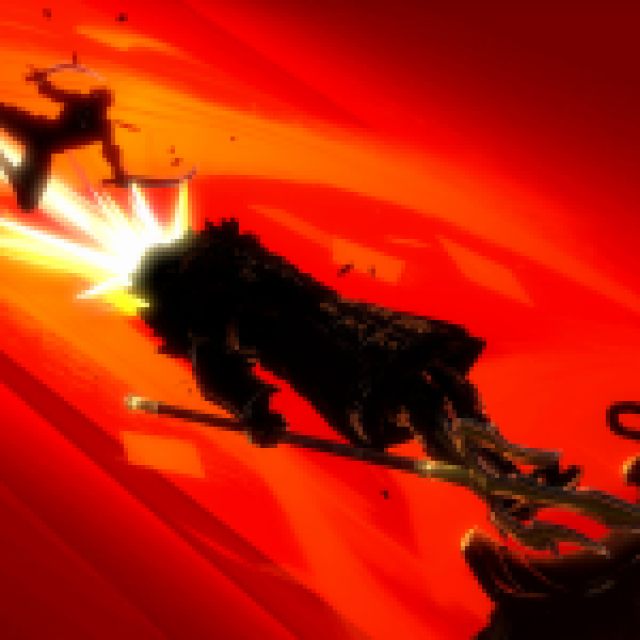
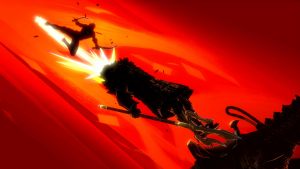
And then we also had Gareth Coker that you might know from the Ori games, or more recently, in the Mario + Rabbids Sparks of Hope with Ubisoft. And I think the combination of those two artists creates a beautiful musical landscape that you can just fall into it. Like, when we’re in the room and you just got that playing in the background, you’re like, ‘Ooooooh..’. There’s a vibe that doesn’t feel cliché but that feels authentic to the world we wanted to build around it.”
Familiar Sounds
MV: As I mentioned earlier, I’m Persian, so of course hearing Farsi represented in a game was not only a huge and welcome surprise, but I was thinking to myself – ‘Is there any other game that I’ve heard Farsi spoken in?’ – Maybe Civilization, but..
Joseph-Antoine Clavet: “For us, it was a self-evident move. You know, I think even from the start it was like, ‘We’re gonna have the version in Farsi’. For the player’s immersion, for the authenticity of Persian folklore, and like you said, if we’re going to represent a culture in a game, why not give people who are actually a part of this culture something that they can really be proud of? Having Farsi in a game… I cannot think of a game just like that, that has Farsi, but that was really important for us.”
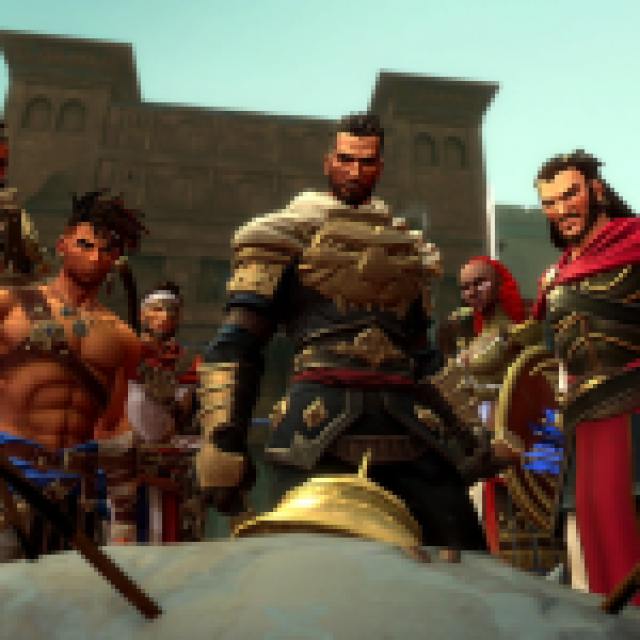
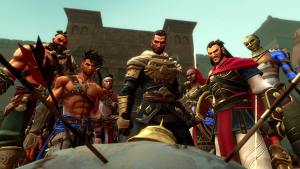
MV: On that note, I was wondering as far as animating the characters’ mouths and everything. Were they animated first for Farsi or English?
Joseph-Antoine Clavet: “They were first animated for English and then the dubbing was done on the lipsyncing that was already done. Otherwise, it would just be so complicated, and the reality is that we have a big market that is English. That said, we wanted to make sure it matched with everything. So if you’re playing Farsi, the French dub, the German dub, you’re all gonna have pretty much the same experience in terms of lipsync with the characters. But having a specific lipsync for all the languages would probably just be too costly or explosive in terms of data.”
“… I’m really happy that it’s connecting with people from Persian culture.”
MV: Well, I couldn’t tell. It looked like it was animated for Farsi.
Joseph-Antoine Clavet: “Ah, that’s amazing to hear, because like I mentioned earlier, I don’t personally speak Farsi. So every time, like, you’re the second one, and I’m really happy we have the second person that can play the game like that. And the first one said the same thing, like, ‘Man, that sounds like the TV shows I’m watching!’ and I was like, ‘Yeah!’ – I could not tell, but I’m really happy that it’s connecting with people from Persian culture.”
MV: I even saw in the dialogue that there are specific words in Farsi that I wonder how many players would catch onto besides the ones that know Farsi. Like the character who refers to her grandmother as “maman-bozorg.” That made me really happy to read those words that I’ve heard growing up.
Joseph-Antoine Clavet: “I’m really happy to hear that, like, no joke, this is why we make games! That’s really cool.”
Making a Legend
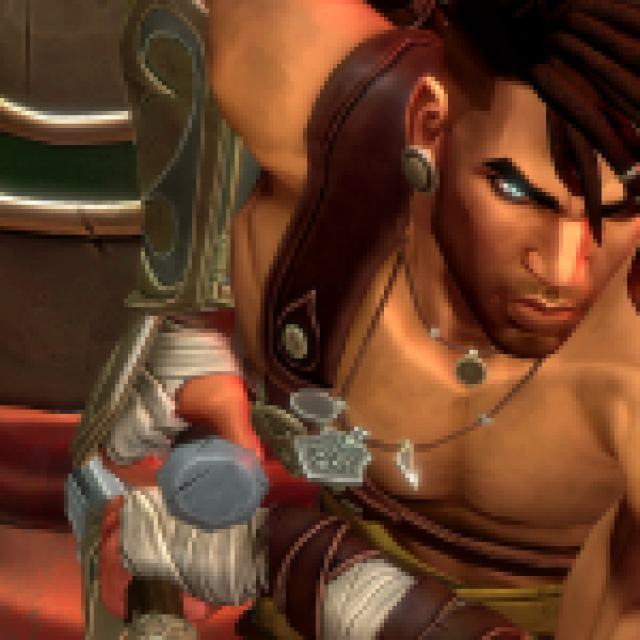
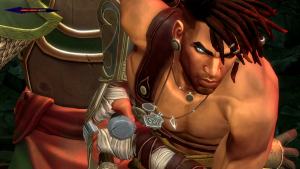
MV: Throughout the history of the series, the protagonist was always referred to as ‘The Prince.’ Are there any things that influenced this new design of the main character and the decision to finally give him (Sargon) a name?
Joseph-Antoine Clavet: “We wanted him to have a name. We wanted the first playable character of Prince of Persia to have a name, to have a story arc where you really feel like he grows, it’s really a coming-of-age story. It was really for us to build something that is true to the pillars of what you’ve lived before, but is a new fresh proposal on it.
We connect with the older games, but we wanted something that stands on its own, and having a character with a name, for example, is a way to just make it our own. There’s no narrative connection with the previous games, it’s also not a spin-off, we’re not relaunching the series. It’s just a game on its own that has its own identity that makes modernization of concepts that we like, the Metroidvania structure, the exploration, puzzle-solving, the fast-paced combat, so it was a combination that just felt right for us to have the first one with a name.”
MV: The decision to make the game a Metroidvania seems like a great way to modernize the formula of the classics that came before it while also still recognizing and giving a nod to the original side-scrolling 2D action games. Was it always the plan to make it a Metroidvania and how do you think the genre benefits the overall experience of the game?
Joseph-Antoine Clavet: “I think it benefits the experience of the game where we don’t have to confine the player to only a castle or only one place, which allows us to showcase more Persian landmarks or Persian mythological places.
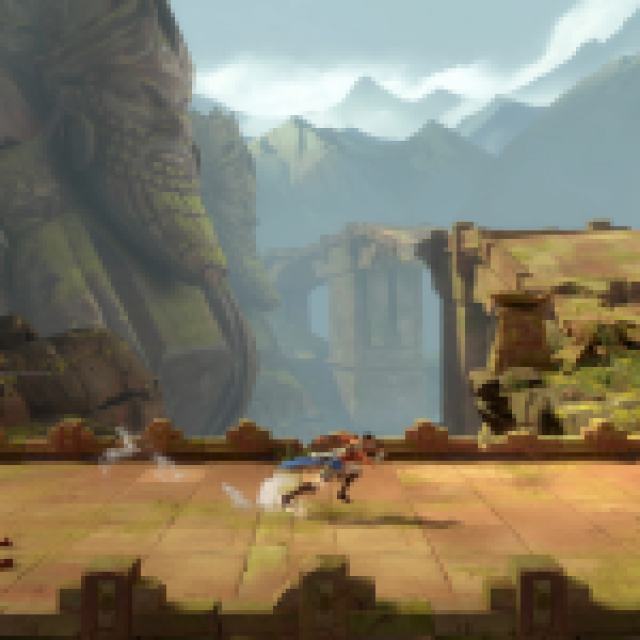
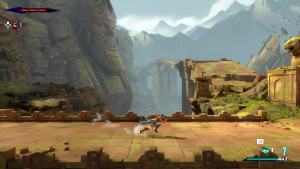
It’s also the type of game we grew up on, all the team, you know. You play the first Prince of Persia, I mean the first first. It’s kind of a Metroidvania before we had those terms. We wanted, from this, to take the pillars of the new games that we did at Ubisoft and just combine it in a way of making a game that we wanted to play. So for us, it just felt right.
The project started in 2020, but I arrived in 2021, so this Metroidvania structure was already settled. This is what they wanted to do, and this is one of the key elements that just drove me, and I’m like ‘Oh a Metroidvania, I grew up on those games, I wanna make one!’ So, for me, it was just natural, and for the team also, we grew up on this.
So it was evident for us that we wanted to make something like that. And having the strong platforming skills of the Montpellier team, it just made even more sense to have a side-scroller and opening a big map with many landscapes.”
“It just made so much sense for the team to just go that way, to be able to showcase amazing landmarks, vibrant colors, different areas…”
MV: It opens up the possibilities for so much exploration and different locales to visit. One of my favorite parts in the demo was when you first leave the palace and you see this giant, vast valley in the background, and I thought, ‘Wow, that’s beautiful. Gorgeous looking’.
Joseph-Antoine Clavet: “When you enter the Hyrcanian Forest and all of a sudden the sounds are different. Or you’re in the Sacred Archives where we hid a lot of lore. We always wanted the design to allow you to kind of, like, fall in the background and be like, ‘What’s the story of that thing?’ and telling more with that kind of framing.
The 2D navigation allows you to have one precise frame – this is what the player sees – so the story you tell is, like, all there. There’s no 360, there’s no hiding behind anything. It just made so much sense for the team to just go that way, to be able to showcase amazing landmarks, vibrant colors, different areas, and the ascension of Mount Qaf, I think, becomes even more interesting when you have this big map that unfolds and you feel the verticality.”
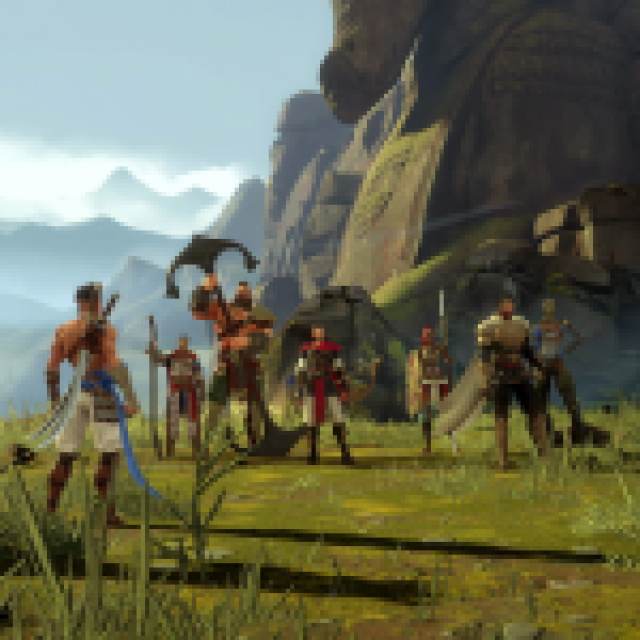
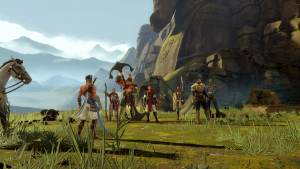
MV: Okay, last question. You’ve obviously become familiar with Persian culture. Have you tried Persian food?
Joseph-Antoine Clavet: “Yes, I have tried Persian food! But I’ll be honest, it was not too long ago that I tried it, like maybe a year ago I tried it for the first time.”
MV: …And did you like it?
Joseph-Antoine Clavet: “I loved it. They made us this big platter of meat, and they bring an apple with it. And like just the fruit, and I was like, you just cut it and eat it in between the meat and it was so good. And there was this stew that I don’t remember the name..”
MV: Was it green?
Joseph-Antoine Clavet: “It was green, and..”
MV: Ghormeh sabzi? It had stew meat and kidney beans in it?
Joseph-Antoine Clavet: “Yes, exactly. In Montreal, we have a few restaurants for Iranian and Persian food. But they’re not, like that’s what’s sad sometimes, it’s not as popular as others. But with the game.. we might open a restaurant. (laughs) No no, we’re not opening a restaurant. There’s no Ubisoft restaurant.”
